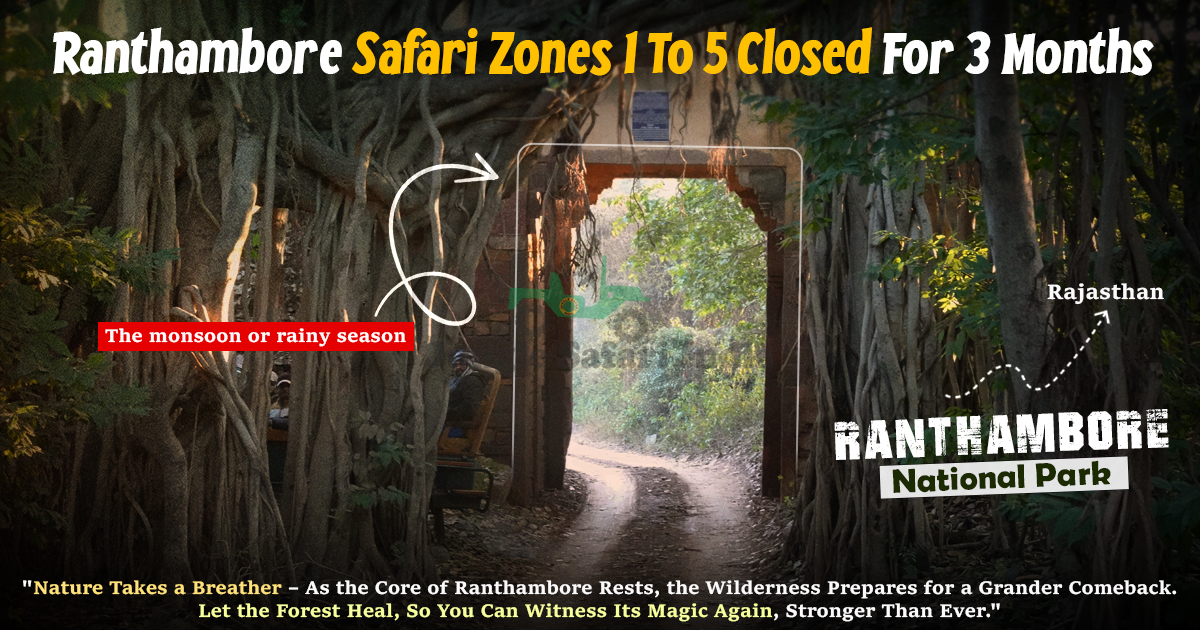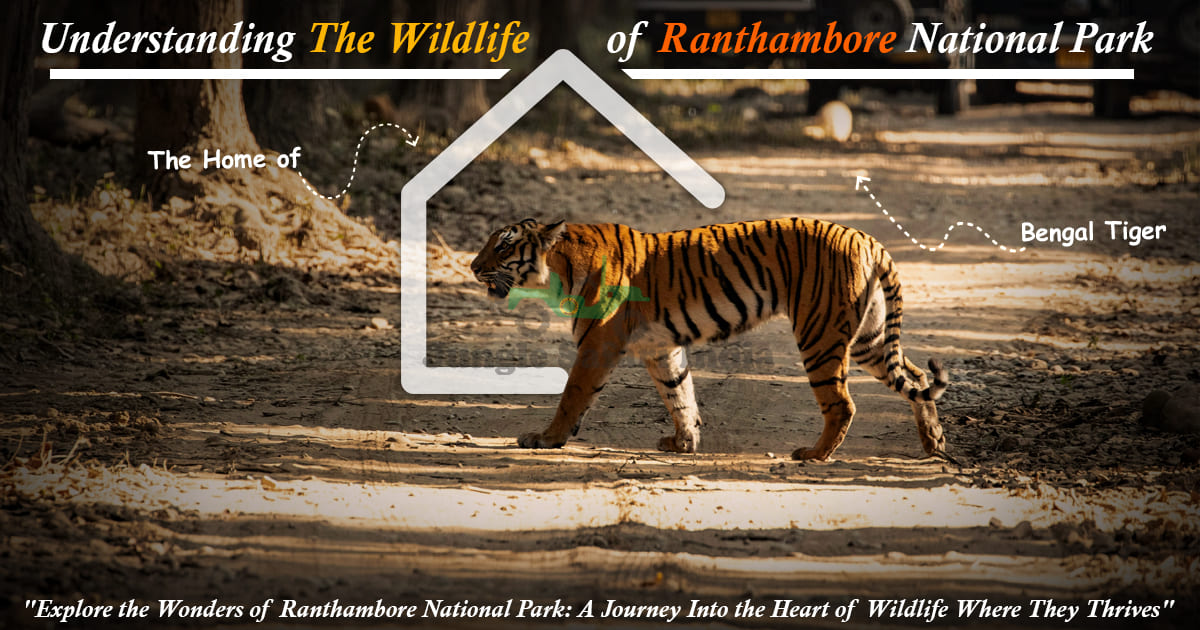Ranthambore National Park is a very famous wildlife sanctuary in India. It is especially well remembered for its tigers, and thousands of people each year travel to the park for safari trips. The park is also divided into multiple zones for safaris, which allows the park to do a better job at protecting the forest and animals inhabiting it. In every zone, visitors can see wild animals. Sometimes, some zones are closed for a short time.
Recently, there was an update from Ranthambore National Park for 2025 regarding safari closures in numerous safari zones. If you are thinking about coming to Ranthambore National Park, then this update will be important for you. In this blog, you will get the latest news about which safari zones are closed and how this may affect your travel plan.
When Are Zones Closed?
The park has closed Zones 1 to 5 starting from 1st July. These zones will stay closed until 30th September. That means they will be closed for three months. July to September is the monsoon or rainy season in India. During the monsoon, Ranthambore National Park gets a lot of rain. The forest looks very different at this time. The dry trees become green again. The grass grows fast. The rivers and ponds fill up with more water.
Because of the heavy rainfall, the roads in the forest become muddy and full of water. The paths used for safari rides are not easy to use. Gypsies may get stuck in the mud. Sometimes, trees fall across the roads, blocking the way. It can also be dangerous to go inside during this time. That is why the park closes the main safari zones every year in the monsoon season. This is a regular rule and is followed every year to protect the forest and its animals, and to keep tourists safe.
Which Zones Are Closed?
From July to September, Zones 1 to 5 are closed. These zones are some of the best zones for tiger sighting. Tigers like T-19 and her cubs live here. Visitors often see them during safaris in these zones. But during the rainy season, Ranthambore safari bookings are closed for these zones.
No gypsies or people can go inside these areas during this time. Park staff and forest officers make sure no visitors enter these closed zones. This provides the animals rest, a secure place for their babies to be brought up, and allows the forest to grow properly. The parks will open the zones again on 30th September, when the rainy season has finished.
Which Zones Are Still Open?
Morning and evening safaris still run in Zones 6 to 10 for all visitors. You can make your Ranthambore safari booking and enjoy gypsy safaris in these zones. These zones are not located in the central part of the forest, but they also have animals. Tourists may still spot deer, tigers, leopards, and birds.
Zone 6 is now becoming more popular. It has open spaces, and it is easier to spot animals there. The number of tigers is also going up in this zone. Zone 10 is a peaceful zone and does not have large crowds. It is good for people who like quiet safaris and birdwatching. So even during the rainy months, tourists can enjoy seeing wildlife in the open zones of Ranthambore National Park.
Why Are Zones 1 To 5 Closed?
There are many good reasons why the park closes Zones 1 to 5 from July to September. The first reason is the heavy rain. During these three months, the park receives a lot of rainfall. The rain makes the roads inside the park wet and full of mud. Driving a gypsy on such roads is not safe. The gypsy can slip or get stuck. This can create risks for both tourists and forest staff.
The second reason is that the roads get damaged in the rain. Rainwater can break the roads or make them too soft to drive on. Sometimes, big trees fall on the paths, which block the road. It is difficult to fix roads in the rainy season. The park staff waits for the rain to stop before they can repair the tracks properly.
The third reason is about the animals. July to September is the time when many animals give birth. Tigers, leopards, deer, and many birds have babies at this time. This is a very special and sensitive period for them. If tourists go near them, the animals may feel scared. Sometimes, mother animals may even run away and leave their babies. This is not good for the wildlife. The animals need a quiet location to look after their young ones. So, closing the zones helps the animals to feel safe.
Closing the zones also shows that the park cares more about animals than tourism. This is a good thing. It helps in protecting wildlife and gives animals a better chance to grow in peace.
What Tourists Should Do Now
If you are planning to visit Ranthambore in July or September, you will need to book carefully. Zones 1 to 5 will be closed during this period, so you do not want to book safaris in these zones. If you have already booked a safari in a closed zone, then you should contact your travel agents or the park office. They will be able to assist you in changing your booking to an open zone. This way, you can still enjoy your safari.
You can still enjoy your trip by making your Ranthambore safari booking in Zone 6, Zone 7, Zone 8, Zone 9, or Zone 10. These zones are open during this time, and you can go for both morning and evening safaris. Many people have seen tigers and other animals in these zones, too. If you go early in the morning, the chances of seeing animals are better.
Before you travel, always check the weather. If it rains too much, even the open zones may stop safaris for that day. It is a good idea to contact the park office before you go.
By doing these small things, you can still enjoy your visit to Ranthambore National Park. Even though the main zones are closed, there are still many areas in the park where you can see wildlife. You can have a good, safe, and exciting safari trip by visiting the open zones.





